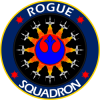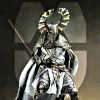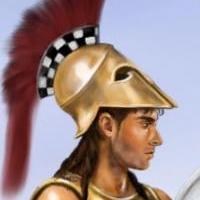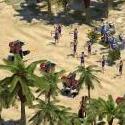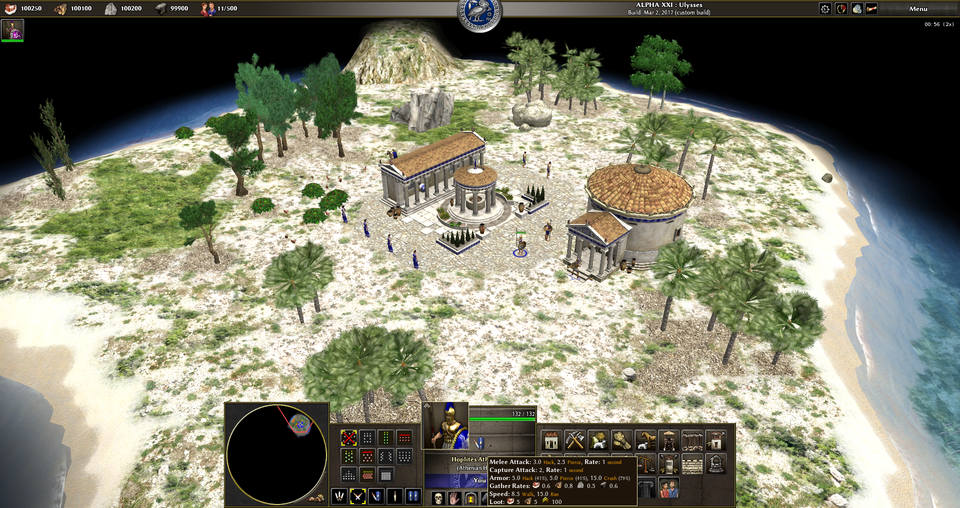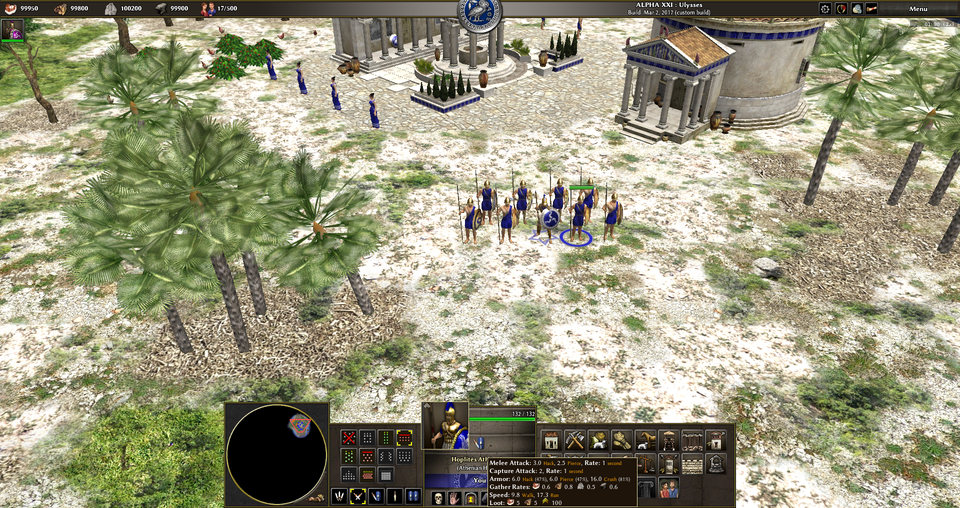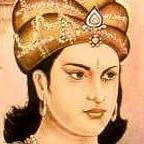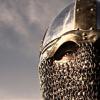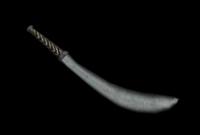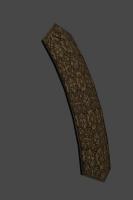Leaderboard
Popular Content
Showing content with the highest reputation on 2017-03-06 in all areas
-
https://en.wikipedia.org/wiki/Leekfrith_torcs Thought you all might be interested in some recent archaeological findings in the time period of 0 A.D.5 points
-
As promised the concept. 6.100 words of pure gameplay related stuff. Note: As this thread digs REALLY deep in the gameplay development, please read the document carefully and try to comprehend what I've written. I don't want read one liner comments like "idea X on page Y doesn't fit my personal view". You have to look at the concept as a whole instead of nitpicking small details. The layout isn't set in stone, it's meant as an approach to get a red line into the game. And thus it's important to get connections between different game aspects. Edit: the current text layout still isn't 100% like I want it to be but oh well... I'll leave it "as-is". If there is a strange looking paragraph simply ignore it Have fun reading! Part I: Gameplay Analysis “From sticks and stones to an Empire: How to employ a civilization concept for a modern time RTS” Game: 0 AD example faction: Athenians Author: DarcReaver Date: March 5th 2017 Introduction This document aims to summarize the current game mechanics, compare them to the original gameplay/game design concept, identify differences and problems with the current layout and create a solution concept. As some of the proposed concepts and ideas require quite a bit of restructuring or addition of code this is to be taken as a serious roadmap that can be followed for all civilizations in the future. If there are technical difficulties are not solvable by volunteers I’d honestly suggest to start another kickstarter campaign to hire a couple of professional coders who are then assigned the tasks that the internal team cannot solve. I know that this has been done in the past and failed, but I think the failure at least partly has to do with the fact that there is no “greater aim” for the game in its current state. There is no direction the game, so there is no amount of code able to finish it, thus the money would have gone to waste anyways (note that this is my personal opinion). But before doing kickstarters, or hiring coders, artists or whatever there has to be clear in which direction the game is heading, which leads us to this document. I believe there has to be a separate discussion on the kickstarter campaign some other time. Don’t get the wrong idea, I know that the proposed concepts below require extensive work and testing. However, please keep in mind that I’ve taken the original gameplay document as reference and adjusted my concepts towards implementation of the intended features. It’s just that my personal believe is that 0 AD in its very heart is not intended to be a “mass up an army and throw them into battle” style RTS. And to be honest – why would someone need another macro oriented game? We already have Age of Empires II HD, Stronghold, RUSE, Starcraft II and a couple of other games which already please that kind of player audience. And trying to mess with those games will most likely lead to a defeat since they’re made by professionals with years of experience in the game creation and have/had huge budgets available to polish their products. The result of this should be clear: 0 ad has to follow its own path instead of trying to copy and combine aspects from other games. So, let’s move on and summarize the current status of the game: General observations: City Borders When starting a game, the player base is surrounded by City borders. Inside the borders, construction of buildings is allowed. The border range can be increased by techs, certain buildings and progression in the city phases. Resource system & starting economy Basic soldiers, cavalry and women can harvest resources. The earlygame revolves around building basic infantry or women and assigning them to resource spots. The training speed is fast, resulting in high counts of collecting villagers in the earlygame (more than 30 or 40 units with 8 minutes). Resources are used to create more buildings and soldiers and research economic and military technologies. Houses and other buildings have comparably long construction times. Various economic upgrades can improve different aspects of gathering processes and are fast to research. Gameflow Most essential military units are available in the first Phase, allowing very early rushes with a variety of units. Building times are very high for buildings and very low for units. Resource costs are mostly the same for all types of military units. The available buildings allow defensive gameplay (farms, citizen soldiers, houses can garrison). The capturing mechanic helps raiding by being able to take over enemy buildings. As the game progresses there are more units unlocked to use. Every building is required to tech up. Siege is available very late, until then the mixture of capturing buildings and raiding economy is the way to go. Synopsis, current faction content: Buildings: Phase I: Agora – main building - House – provides population - Sitobolon – farm tech building and drop off point for food - storehouse – economic tech building and drop off point for minerals, lumber - Agros – unlimited food production - Epaulos – tech building for herdables/huntables/cavalry - Watchtower – scout building - Limen – harbor building - Strategeion – main military building Phase II: - Blacksmith – military tech building - Naos – advanced tech building - Emporios – market - Pyrgion – Defense tower - Theilos – defensive walls - Stoa Hellenica – specialist barracks building Phase III: - Epitheikisma – Fortress - Wonder – wonder building - Gymnasion – advanced military building - Theatron – economic civic tech building - Prytaneion – economic military special building This is the complete building number that is available to a player when choosing the Athenian civilization, 19 buildings. To unlock Higher City phases a number of buildings of the previous phase are required. Units: Phase I: - Hoplites (spearmen) - Peltastes Thrax (skirmisher) - Prodromos (ranged spear cavalry) - Psilos (slingers) Phase II: - Rhomphaiaphoros (heavy melee) - Thyreophoros (heavy skirmisher) - Iatros (healer) - Hippei (melee cavalry) Phase III: - Oxybeles (scorpion) - Lithobolos (catapult) - Epilektos (phalanx city guard unit) - Toxotes Skythikos (ranged archer) - Toxotes Kretikos (ranged archer) - Epibatos (naval infantry) - Heroes (Themistokles, Perikles, Iphikrates) Right now, the player starts off with basic infantry (hoplites), basic cavalry (Prodromos) and a basic ranged attacker (Psilos) without any necessary teching. Building a barracks adds a basic skirmisher (Peltastes) to the mix. Phase two adds healers, a special infantry and a special skirmisher (Rhomphaia/Threophoros), available through a second barracks and cavalry (Hippeis) Phase three unlocks siege (Oxybeles/Lithobolos), a City Guard Phalanx (Epilektos), ranged units (Toxotes Kretikos and Skythikos) aswell as naval infantry (Epibatos) and heroes. Summary of current game mechanic issues (note: “tier” means tech level) City Borders While in theory an interesting concept, the implementation at this stage is limiting the game more than being a useful feature. - Expansion is hard to do (Agoras require Phase II and lots of resources/time to be built) - No good options to expand the city borders apart from spamming houses or barracks - on certain maps it’s impossible to place drop off points for lumber and metal near the first major forest, leading to a low efficiency lumbering early on Result of this feature: Cavalry rushes and booming (don’t expand and spam economic units) are the choices to pick when playing the game. As it’s hard to work towards resources in the center of the map it’s easier to stick to the own borders and produce food with farming and harvest nearby lumber while building more and more economic units. Cavalry is very mobile and useful for harassment. Regular units don’t do the job well because it’s not possible to chase villagers Buildings: - no interconnection of building types: This means that there is no possibility to limit the amount of unit types available to the player. Every unit is trainable quickly, that way there is no interesting unit transition like archers into cavalry into infantry. Of course it’s possible to first field archers then cavalry and then infantry, but this doesn’t require planning or build orders. Just build a barracks and you’re done with your military. - forced construction of building phase buildings does not allow flexibility, players always have to build everything to get access to higher tier: This is an issue for the game duration. There is no possibility to follow a fast tech into a high tier to finish off opponents with superior units, or to deliver a teching advantage. As an example in AoE there are civs which are fit to quickly advance through the ages (like Byzantines, Mongols or Saracens) to field superior units like knights. Combined with the lack of additional military content in phase II the city phase feels dragged out. It takes ages to get through this phase without gaining a significant difference or advantage from phase I. - Building cost- and tech-requirements are unbalanced i.e. a fortress only offers two siege weapons while requiring lots of teching to reach and lots or resources to build. This results in unbalanced strategic options for building progression. Players have to build overpriced or underpriced buildings to get benefits that do not match the initial price. The progression should be: the more important the building the higher the cost should be. Units - Too many units are available at the start Overall the game offers a wide number of different units, but the unit arrangement is strange. In a strategy game the unit strength is usually increased over time, either via upgrades for existing units (called scaling) or by giving access to stronger units. A player starts off with his weakest units and as the game progresses he unlocks more and more powerful units, ultimately with some type of specialist unit that offers a very large advantage in one area. Most units with specific strengths have specific weaknesses which create a so called “rock paper scissor” counter system. The more specialized the unit is the harder the weakness is applied to enable countering it. This is essential for a wellrounded counter system. - Unit upgrades gives too large gaps between unteched and teched units It seems as if the bonuses provided from teching are very large, while unupgraded units are extremely weak, upgraded units almost take no damage compared to them. This is bad, as it requires players to instantly upgrade their units to stand a chance against an opponent, limiting the choice to “mass” weak units instead of choosing to tech up to get a smaller force of more advanced, stronger units. - Heroes come late and require lots of resources for limited effects This is a separate issue and my personal opinion on this matter is that heroes have too little effect on the game. According to the design guide the game takes inspiration from Warcraft III in which heroes have a very large role from the very start of the game. Getting early heroes, leveling them up and fighting the enemy is very important and can decide a match early. The hero system in 0 ad doesn’t nearly as much influence the overall game, which makes me question the reason why heroes are in the game in the first place. - Formations are fiddly and micro intensive The Formations are interesting, as they provide tactical options for fighting, like forming a phalanx to attack melee warriors. It’s a logical thing that there is a necessary minimum of soldiers to form a formation. The problem with the formations right now is that it’s not possible to select units in a formation and ignore units that are not included in the formation. Since units in 0ad are pretty small in a battle there is a constant reforming of formations since new trained units rejoin the formations on double click selection if you reassign the formation. - Unit training times are too quickly, massing troops early game is absolutely possible. Rushing with units from the town center is possible. This dumbs down the game. There is no strategical choice between building a military building path to unlock certain units and an early economic boom defensive playstyle. Instead it’s possible to train relatively potent units from the very start and the “man-spam train” is on track. While creating variety in the early training order this dulls down the tradeoffs that have to be made in the earlygame by players. In a good RTS there is a variety of choices to make. Either train melee units early, train ranged units or try a mobility approach for harassment like cavalry units. Each path means that the other military units are delayed by X amount of time and there is a tradeoff between having more pressure on the enemy or have increased economic power. Since cavalry can also collect food, there is zero disadvantage in training cavalry compared to training economic units. In 0ad there is no delay for fielding other types of units (except for the time to collect the required resources and building time), so army compositions are very flexible. This renders tactical advantages from training certain units useless as they can immediately be countered. I got the feeling this is why there is so much cavalry rushing going on. A mobile early cavalry army allows to put pressure on an enemy, and can only be countered by other cavalry as regular units are too slow to catch up. The mobility of ranged units is high; most skirmisher cavalry and cavalry archers available to the civs at the start. Ranged cavalry can outrun their counters and pick off single units. In RTS players who can choose their battles are in an advantageous position.2 points
-
Hi guy. I add text to the resources name, so that the player can get a little tooltip when hover over the icons in the top left. Can someone extend the resource code to allow the resource jsons to have a tooltip line like the technologies have? The reason for this extension is so that the gui at the bottom does not get screwed up. See, the editing I did made it work for the top ribbon, but screw up the bottom gui. Current modded json: { "code": "food", "name": "Food - Harvest from Animals, Berry Bushes, Fish, or Farms", "order": 1, "subtypes": { "fish": "Fish", "fruit": "Fruit", "grain": "Grain", "meat": "Meat" }, "truePrice": 100, "aiAnalysisInfluenceGroup": "ignore" } Desired json possibility: { "code": "food", "name": "Food", "order": 1, "subtypes": { "fish": "Fish", "fruit": "Fruit", "grain": "Grain", "meat": "Meat" }, "tooltip": "Harvest from Animals, Berry Bushes, Fish, or Farms.", "truePrice": 100, "aiAnalysisInfluenceGroup": "ignore" }2 points
-
bueno, un avance mas, tengo poca imaginación y me cuesta determinar si el estilo entra dentro del juego en alguna facción o en el escenario mismo, pero los escucho a uds con sus opiniones, las texturas que uso son provisorias hasta ver bien cuales son las que se pueden usar para el juego por el tema de los derechos.2 points
-
2 points
-
2 points
-
Part III: Military: After I received the additional information that the current in place pathfinding mostly revolves around single units and still uses workaround solutions I’m creating as some kind of foreword: The suggestions about battalions are not set as a requirement for the game, instead it would be possible to simply create multiple units with one click. Instead of creating one entity per training cycle the game simply creates like 3, 4, 5, 10, 15 entities at once that can be grouped by the player and immediately use a desired formation as a temporary solution. With increased training times for units in general, this will also make the random “one slinger army against 2 peltastes” engagements less of an issue. It simply looks odd. No civilization would engage another civ with a single soldier. There’s a meme about Age of Empires on the net. While being quite sarcastic this sums up certain aspects that feel weird for a “historical” game about large kingdoms and societies: : Anyways, back on track: General concept: Units have normalized speed, the better armoured a unit is the slower it moves. Edit: after some notices from Tiber7 this is not always the case, so take this point as "situational" at best. However, the armour level applies to the endurance system. Units have an additional stat, “endurance”, which affects speed and combat performance, similar to the endurance system employed by Total War games. Endurance allows units to run or charge until they’re exhausted. Exhausted troops fight less efficient and will require to rest to regain back their endurance. The factor how fast a unit can be exhausted is based on two things: 1) the armament, i.e. lightly armoured Peltasts can run longer distances than Pikemen or Hoplites and 2) the experience level a unit has. Veteran troops can march and fight much more efficient than rookie soldiers that have been freshly trained. This makes preserving soldiers with experience rewarding for the player and allows tactical decisions to engage unprepared enemies while risking that own troops might get exhausted while approaching them instead of a slow moving army that allows the enemy to prepare for battle. Additional stat that is also based on endurance: mounted units have the ability to trample other units with a charge. Units that are able to charge are chariots, light and heavy cavalry and elephants. Those units are intended to cause chaos in enemy formations. Being able to trample allows them to counter units that are isolated or not properly protected. The intention is to make battles more interesting and allow plays by smart usage of cavalry charges to turn the tide of battle. Units are made more durable. As a workaround I’d go ahead and simply increase the hitpoints significantly, or add a random integer that varies attack damage. I.e. damage for archers ranging between 10-20, and damage of spears 25-40 (Or something similar, these are just examples). Units have different stats for “frontal” defense and “rear” defense. Soldiers engaging other soldiers frontally have a chance to “deflect” or “block” attacks off. The more experienced a soldier is thee better he can block off attacks. Soldiers with shields have a greater frontal defense against missiles like stones, arrows and spears. A picture illustrating the matter: units have an armour penetration value, which allows them to ignore enemy unit’s armour to deal full damage. As an example: melee spears have a lower base damage but have a comparably high chance to pierce through armour, making them the choice of action to deal with heavy melee units. Archer arrows have a lower chance to damage heavily armoured targets. Missiles like stones from slingers have a low chance to penetrate armour but deal high damage per missile. As I’m not 100% aware of how the current damage system works there might only be minor tweaks necessary to employ the necessary stats to make this system work. Varying accuracy for ranged weapons – archers, slingers, peltasts and siege weapons have accuracy values that decrease over the range they’re shooting. Accuracy increases with veterancy levels. From my observations this is already implemented. certain units gain combat bonuses when in or nearby forests, for example against arrows. Or they become invisible to the enemy to allow surprise attacks. This also creates more tactical depth to fights. units get a dynamic line of sight that is influenced by buildings and other obstacles in their way. This way scouting becomes more important to identify threats aswell as increasing the tactical value of surprise attacks “out of nowhere” military unit costs are normalized. There needs to be a consistent system to provide a usage of different resources to balance out different types of units and gathering strategies. How exactly the values are setup and which military unit takes which resource is up to a later stage. I’d strongly suggest that food and metal should play the larger role. Military population costs are based on their size. A regular soldier costs one population point, while a Chariot or cavalry unit requires 2 pop. Elephants and siege would cost 3 pop. Just to state some numbers. In general: the more powerful a unit is the more popcap it uses. This makes accomplishing large forces of elite units harder, and promotes using different types of troops together. Reasoning: read the design document “Fastest click wins - In many RTS games, it isn't the player with the most intelligence or the best strategy that wins, it's the player who A] knows the proper order of actions and B] carries them out the fastest. People that practice a general procedure that is usually rewarding and know keyboard shortcuts should be slightly advantaged, and they will still be required; but, the if the opponent recognises their 'cookie cutter' gameplay, they should easily be able to outwit them by identifying and countering the unoriginal/over-used tactics with an effective counteractive strategy. Single path to victory - It seems to be a trend that games cater to a specific strategy that is frequently used to attain a victory. That could be rushing, turtling, booming, etc. We recognise these are valid ways to win a game, but we will attempt to not favour one over another. Players should be able to successfully use (and adapt/change) any strategy to achieve a victory. Sneaky Tricks - Many games overlook some aspects of gameplay that are unintentionally (by the game designers) used to a player's advantage. Through many hours of gameplay testing, we need to identify and eliminate these tricks. Repetition - If you find yourself doing the same action over and over without thought, then we need to either eliminate or automate such an action. Linear repetitious procedures are meaningless and boring. “ scout towers can be constructed by military units and create a city border, which allows forward bases and forward gathering. Military layout for Atheneans Strategeion: Trained units - Hoplites Athenae, slow but well armoured soldiers with a bonus damage to cavalry units. Low initial damage and attackspeed, but profit from various upgrades that are present in other buildings. - Psilos, fast, lightly armoured, ranged slingers with high missile damage, but low accuracy and armour penetration. Mostly useful to counter other lightly armoured units, but comparably cheap and fast to train. Range 30m - Peltastes Thrax (require Blacksmith), ranged spearthrowers. Medium speed, slow rate of fire (once every 3 or so seconds), high damage, armour piercing spears with a range of ~20 meters. Rookie troops have a chance to miss their spears. - Prodromoi (requires Epaulos): light spear cavalry, changed to melee instead of throwing spears. The spear throw instead becomes an ability. Due to having spears, their armour penetration is high, making them a good counter to other cavalry units. Due to them being lightly armoured it’s important to use their mobility to avoid unnecessary damage. The thrown spear allows to deal with approaching enemies by weakening their hitpoints beforehand. Limen: Trained units - Fishing boats and transport ships which serve as troop carriers and allow capturing ships. - Medium combat ship that is unlocked in Phase II (TBD) Gymnasion: Trained units - Epilektos, well armoured, slow Pikemen with high armour armour penetration, especially against cavalry. Can form several special formations which allow to deal their damage. - Hippei, fast moving medium cavalry with powerful charge, have high attack damage with swords. Their hitpoints are lower than other cavalry units, thus they’re required to use flanking to cause the most damage without taking too much damage. Hellenic Stoa: Trained units - Threophoros: medium speed, better armoured than Peltastes Thrax, high damage spears with high armour piercing value and decent defense against melee attacks. - Toxotes Skythikos: Archer with good rate of fire and range, can fire flaming arrows to lower enemie’s endurance. Cheap to build and maintain, but low hitpoints, making them vulnerable to cavalry, Range 40m - Rhomphaiaphoros: medium speed, well armoured with high damaging sword attack, have great endurance. Epistoklisma: trained units - Oxybeles, slow moving, long range ballista that shoots bolts in enemy unit formations. It’s a supportive weapon that lowers enemy unit’s endurance/formation bonuses as they create chaos where they hit, range 60m - Lithobolos, long range siege weapon that deals high damage to buildings but has to be deployed/undeployed to be used and moved around. Can also fire flaming missiles to either ignite enemy cities or unit formations. By default rather inaccurate, it profits from technologies which increase its accuracy. Siege engineers etc., range 100m Limen Megalos: trained units - TBD, as I don’t know enough about sea fighting yet and the sea fighting does not seem finished in general yet. Most likely ships like Triremes and siege ships to terrorize the sea. Athen had a scary fleet afterall. Heroes: The hero system is changed: Only one hero is available at a time. Each hero provides unique bonuses to the Athenean army. When a hero dies another one can be trained. Heroes get special abilities that allow them to influence the course of the battle. - Themistokles, focus on navy efficiency and bonuses to soldiers defending territory. - Perikles, grants economic bonuses like faster building, faster army training speed and cheaper buildings. - Iphikrates, grants general combat bonuses to formations of soldiers. In case the "Silver-Iron" Split would be done Heroes could cost Silver as a unique resource. Alternatively they purely cost metal. The gameplay vision/desired results in a nutshell: The aim of the proposed gameplay concept is to create a transition of a small civilization that skirmishes its way to an empire. Economy management is shifted from individual micro of lots and lots of gatherers into a system that allows a limited amount of economy units do all the necessary tasks. Bollecting the correct resources for the planned strategy (rushing/booming/teching) and the buildorder become more important. Managing armies and gatherers creates a feeling that the player controls a part of an empire instead of a bunch of villagers and soldiers that battle for a random region. Training various types armies, upgrading them and sending them into micro intensive, tactical battles create excitement for the involved players and random based variances in the battle system allow variety in outcomes of who wins and who does not. The usage of ambushes, flanks and pinpoint harassment allows comebacks for players who fell behind. There no longer is a need to apply a huge economy and then mass units from dozens of military buildings to simply overrun the enemy. The game follows an organized structure that allows predicting enemie’s plans by scouting carefully and intercepting them by smart usage of information.2 points
-
Part II: Solution Concept taking Atheneans as example civilization: Excerpt from design doc: “Developers do not seem to be content to further the traditional RTS in the same vein as Age of Empires, Command and Conquer, Red Alert, and Warcraft II. Though some are fleeing, we are going to stake a claim in the RTS genre. There is still much innovation to be made. This for us means: A. Less tedious/mindless micro-management B. More strategic thinking C. Greater stress on planning, formations, and tactics D. Choices, Choices, and more Choice ” Right now, none of this is actually present in the game. 0 AD combines all negative features of the game combined with a broken gatherer concept to make the whole game more “unique”. This is a problem and really unfortunate. We have lots and lots of unnecessary micromanagement, almost no strategic depth, no real planning. Only thing already implemented is the use of formations and tactics like flanking of a Phalanx. My aim is to create gameplay patterns that match the points above: - removal or repetitive and unnecessary micro management - employment of battle tactics in conjunction with formations, trampling, surprise attacks, flanking and directional combat. These battle tactics make up for the fact that there are less total units on the field. There is more tactical micro in place than strategical micro - The fighting duration between units is increased. This reduces the need to permanently replace units lost with the “manspam train” - set the waypoint to the battlefield. Newly produced soldiers move towards the battlefield every couple of seconds and after a while this looks like a train moving along the map. - Enforcing a teching pattern that allows a greater diversity in army compositions, and to make certain “cookie-cutter” unit combos harder to reach. - Creating variety in combat. The outcome shouldn’t always be the same. This is accomplished by varying weapon damage and directional combat and creating small amounts of luck based chances. - Making units more durable allows constructive army micro. I.e. more options to heal wounded units. Unit preservation becomes more important and easier. This punishes mindless suicide raids and rewards taking care of units. General earlygame changes: 1. Remove all units from the Town center except for women and citizens. All units are trained in batches of different sizes (the exact number is up to discussion, I’d say we start with 2 women and 2 citizens per training interval. Training time and resource costs are increased accordingly). Gathering rates are changed, this is covered in a separate point. House pop cap is increased; fewer houses to provide more population. Reason: less repetitive micro required by lowering the amount of clicks to get the eco going. Increased gathering rates allow less gatherers to get the necessary resources. This is also important since military will not be able to gather, too (see below). Less houses for progress means less spam to build them. House walls are less attractive and palisades become the choice of defensive building at the start of the game. This all frees up time for the player to think ahead of how he’s going to setup the game while maintaining a relatively complex economic system. I’d strongly suggest of battalions with multiple units in a single entity. This allows less individual micromanagement (-> “clicking speed”) and allows a better implementation of formations. Additionally, battalions create a better atmosphere of managing armies and an empire, not a bunch of ravaging soldiers and a couple of farmer’s daughters Depending on the eco setup the gathering processes can be tweaked to match the size of women “battalions” and Citizens. I.e. maximum gatherers are 4/8/12 for small/ medium/ large resource spots. 3. Slow down everything. Women speed, soldier speed, cavalry speed. It’s pretty obvious that the game runs like a turbo random map game in Age of Empires on double speed. Way too hectic for a game with such a detailed economy and military system. Instead, the focus should go more into automatization of processes to allow more strategical planning. This also makes “fast clicking” less of a requirement to manage the game well. This will improve the game pace massively. 4. Citizens – they do no longer start with their weapons, instead they only work as male collectors. They collect food, wood, metal and stone faster than women, and they can hunt with spears or bows. They have the option to be “called to arms” to receive their weapons but lose their ability to collect resources (in case of Atheneans: Citizens turn into Hoplites). The upgrade is permanent. Alternative: Citizens “call to arms” is a timed ability. When activated Citizens run towards the Civic Center (or Blacksmith) and receive their weapons. When leaving the city boundaries or after a certain time they drop their weapons and become gatherers again. Reason: having an army that can collect resources is problematic. As soon as a player decides to attack, the player loses resources from not gathering resources. To limit the negative effects of this the Citizen speed must be high so travelling to the enemy doesn’t take too long. This makes units look ridiculous when they sprint across the map. The amount of units collecting resources makes it necessary to slow down individual gathering rates, so unit massing is important to gain economic bonuses. The “call to arms” concept allows players to react to early attacks by calling their citizens to defend the city. Raiding economy easier with regular units, as the gatherers cannot fight back efficiently. There is a tradeoff between military force and economic force. This conceptual change still contains the spirit of “Citizen Soldiers” that the game favors as a core element, but in a less problematic way. Military units should not double as resource gatherers. 5. Women can only collect food, and the efficiency aura is removed from them. Gathering from herdables, fields and berries is significantly more efficient. They cannot hunt efficiently because they are not able to use a bow or spear for a ranged attack. They can still collect from them if a Citizen first kills the animal first. A mix of Citizens and Women early on is more important as both units synergize well. Mindless massing of women is made less attractive, since the amount of herdables or berries is limited early on. On the contrary it’s an option to gain an advantage from taking free food on the map with high efficiency by having women collect wild berries and i.e. protect them from raids with male, called to arms citizens. This also allows players to expand early on and increases the necessity to keep scouting the map for assault targets. Being sneaky by collecting hidden resources rewards players with saved resources on early fields. 6. Neutral gaia herdables on the map: herdables can be captured (copy from AoE II, I know. But it’s good!) and then fatten over time. They can be moved around and be gathered from citizens and Women. 7. Starting units are reworked: Atheneans/civs in general no longer start with a mixure of units. The starting units are limited to two Women and two Citizen. The citizen either serves as a scout or can help with hunting to improve food gathering. Since Atheneans are a defensive civ a fast ranged cavalry scout and Psilos are unfit as starting units. Atheneans should be slooooow. Resource layout: Any good RTS needs a clear role for each type of resource that is available. Example: Company of Heroes features 3 resources – manpower, fuel, munitions. Manpower is used for training new units, teching all kinds of upgrades and reinforcing squads. Fuel is used to bring vehicles on the field and tech global upgrades, for example enable the usage of grenades for Riflemen. Munitions are used for squad specific upgrades like giving an MG gunner to a tank or adding sight scopes, or to give a Panzerschreck to a squad. Munitions also are used for usage of active abilities – artillery strikes, Air raids, smoke barrages, tossing grenades and so on. Something similar is in place for Warcraft III, too: Units require gold. Items and combat enhancing features require gold aswell. Teching, buildings and specialized units require lumber as a second resource. A pattern like this should be enforced for 0 AD. Players need to know that if they want to do X they need resource Y. My proposal would be following: - Food is used for training gatherers, melee infantry and cavalry. Military techs and combat enhancing techs require food. - Wood/lumber is used for construction of non-military buildings and required for economic upgrades. Training ranged units requires wood. Wood is also needed to progress city phases. - Stone is used to create military buildings. Walls, Towers, barracks, Fortresses. The creation of Siege weapons requires stone aswell. Stone is needed to progress in the next city phases. - Concept proposal : Metal is split up into two resources. One is called Silver, the other Iron. Silver is used to tech economic upgrades and army upgrades. Iron is used for training soldiers. Advantage would be that there are more options to customize the gathering process into “unit massing” or “teching progress”. Silver is a teching resource, while Iron is a production resource. Elite units like Chariots, Elephants or mercenaries can require Silver as training resource to mix things up for additional gameplay depth. - Alternatively, Metal is a combined military production and teching resource. It’s used for training every military unit that is fielded. Military techs and combat enhancing techs require metal. Economic techs require metal, too. Upgrading city phases requires metal (or silver). Building layout for Atheneans: Phase I: Buildings built by women: houses, farms. Buildings build by Citizens: Apotheke, Strategeion, Sitobolon, Epaulos, Blacksmith, Naos, Pyrgion, Limen Proposed building dependencies in a picture: Conceptual changes: Apotheke: can be built anywhere, drop off point for lumber, stone and metal Sitobolon: unlocks the option to build fields, contains economic upgrades for harvesting and gathering berries Epaulos: this building contains upgrades for hunting and gathering from animals. This building provides upgrades for the overall performance of cavalry units. It no longer trains sheep or goats (the training herdables will be used in a different way in a different civ concept, will be covered in the future). Blacksmith: contains military upgrades, and unlocks ranged units. Limen: a basic shipyard that contains fishing boats and transport ships. Transport ships can be garrisoned by soldiers and then used to capture enemy ships. Strategeion: by default, it only enables to train Hoplites Athenae. Further contains Peltastes Thrax and Prodromos (require City phase) Naos: contains healers and heroes. Yes, you read correctly, I’d suggest heroes and healers are put in an earlier stage of the game to increase their influence on the gameprogress. Of course, considering that they join the game earlier they will work in a different manner and have different stats. Hero units will be featured in a separate position below. Pyrgion and Palisades: defensive buildings for a defensive styled civilization, cheap, fast to build, but easy to destroy Phase II (600 Wood / 400 Stone/200 metal, requires 3 buildings to be constructed): (all constructed by Citizens) Emporios: Market building, contains upgrades that allow trading, increase economic efficiency (that means: upgrades in here allow resources to last longer, especially metal) Gymnasion: Advanced military building, trains Pikemen and contains upgrades that increase infantry effiency (more hitpoints, better attack, better speed etc.). Also trains Hippeis and thus provides a gameplay focus on infantry units and to make them more versatile. Additionally, cavalry helps out the immobile Phalanx formations by protecting the flanks and applying pressure to the enemy. The disadvantage is that this building does not contain hard counter units, and thus it’s necessary to provide the correct army composition to make use of the units from the Gymnasion. Hellenic Stoa: Advanced military building, contains Rhomphaiaphosos, Thyreophosos and Toxotes Skythikos/Kretikos. This building serves by providing a mixture of dedicated hard counter units that hit hard but are specialized. Also contains upgrades for said units. Agora: main civil building that expands the command area and creates further colonies. Trains gatherers and allows to advance through city phases (mostly like it is at the moment). Theikos: improvement of wooden Palisades. Those walls cost stone and have better stats (obviously). Can be built anywhere by default. Defense Tower: building that shoots arrows (obviously) Phase III (700 Wood/ 1000 Stone / 500 Metal, require 2 buildings to be constructed): (all constructed by citizens) Epistoklisma: Fortress used as ultimate defensive building, contains upgrades for military units in general (i.e. training speed). Furthermore allows construction of various siege weapons. Theatron: economic boost building. This building increases all gatherer speed and efficiency in the civic center radius (similar to the Wheel technology in Age of Empires) Prytaneion: Government building, contains techs that affect cavalry units and provide bonuses to general infrastructure: faster construction of buildings, population efficiency, unit costs, ships and so on. It basically boosts the economy indirectly. Example for Athenians: Reformations of Iphikrates that upgrade regular Hoplites to Naval soldiers and replaces Toxotes Skytikos with Toxotes Kretikos. Wonder: serves double as a victory condition and boosts all military unit’s performance significantly (the wonder is a proud sign of how advanced a civilization is, and thus the population will greatly try to keep it that way) Limen Megalos (military shipyard): Upgrade for the regular Limen, alternatively an own building that enables construction of large ships.2 points
-
Thanks for trying out 0 A.D. and coming here to report your problem. As the game is still in alpha releases there are still many things we need to do. Many of these we know already, so when you provide feedback we would ask you to focus on some of the other points that could be improved. PLEASE READ THE FAQ BEFORE YOU POST HERE. THANK YOU. There is a neat table of planned features at http://trac.wildfire...ayFeatureStatus so you can tell what we are planning to add. Lag This is a common complaint, and with good reason. The game does not run as fast as we would like. Late in the game you will probably experience some lag, this is caused by a mixture of things, AI and pathfinding are big ones. The problem is worse on island maps and with multiple AI players. One thing that can be helpful is giving us the profiler information. This automatically generated information is useful for working out where the lag is coming from. If you hit Shift-F11 this will be dumped into a file (location given at the top of the screen). Please upload these data to our forums to help us solve the problem. Thanks! Missing Animations Some units glide around or don't drop to the ground when killed. We have an animator who is working away at making pretty animations. More animators are invited to help with this task. Units Can't Attack When Chasing There is a problem in the code where units decide to attack, then the chased enemy gets out of range before the attack hits so it is aborted, so in effect any units chasing each other won't be able to deal damage. Greyed out/disabled menu items Some menu items can't be clicked on, this is because those features aren't yet implemented. Units don't fight in formation Can't run two instances of the game simultaneously on Windows Multiplayer Lobby No one can join my game! Currently, only routers with UPnP support or routers that have been properly port fowarded are able to host. I was disconnected from the lobby... This is usually caused by a moderator kicking you for abusive behavior or inappropriate/vulgar chats. AI Problems AI tries to gather from resources near your base AI Doesn't Know how to Fight using Ships There may be errors loading a saved game with AIs. Rejoining a multiplayer game with AIs is not supported yet. Common Suggestions "You should use multiple threads/cores" 0 A.D. does have multiple threads for e.g. texture conversion, pathfinding, sound/music playback and user data reporting, but the game simulation and renderer currently run in the main thread to simplify development. "You should use Kickstarter, Indiegogo, etc." We did try to do an Indiegogo campaign, but while we did raise some money which will go towards improving the game, we did not raise as much as we had hoped. The goal was to raise enough to hire two developers full time for two years, but we did not reach it so we have not been able to hire them. We might consider doing it again in the future but we currently do not have the resources for it.1 point
-
I'd just want to give you here a link to an old Indian martial art. I think it could be used as a base to devise an Indian unit, in either Empire Besieged or 1000 A.D. This thread could be then used to discuss the faction. Beware, as it could be a-historical (the Gupta being a northern empire). This is based on the mythological origin of all the far-eastern martial arts, as being related in Wikipaedia. An Indian monk, Bodhidharma, came to the Shaolin temple in China by the turn of the 6th century A.D. He eventually developed a spiritual-martial art derived from a pre-existing Indian martial art (so it is valid for the 5th century and should be for some centuries before as well), his father being of the warrior cast. This martial art, Kalarippayatt(u), derived itself from three main influences/cultures: the old Dravidian (relation to nature and animism)the Buddhism (pacifism and energetic body)the new Aryan (art/theory/holistic of the military supremacy)Masters at arms (fencing masters?) (gurus) were doctors too and taught how to kill and how to heal. In this old time, 14 weapons had to be taught but mastering one could take many years of course (at least: staff, hand, sword, knife, spear, flail, shield). On the video links in English below, they tell about the history and the goals of this martial art. So, the idea would be to have either a costly warrior-healer-leader (possibly with minor healing capacities), or a cheaper champion with some regeneration over time, both dealing multiple mêlée damage type (indeed, all the 3 damage types). Really. Watch at the videos. I don't know whether they were armored or not, but surely, they could be the alter-ego of non mounted knights. Nowadays, this art is still taught by dynasties of masters at arms in the Kerala state in the SW. THe number of weapons taught has decreased with time. Here in English:1 point
-
bueno en base a lo que me explicaste (que soy duro de entender, yo no soy muy ducho con el tema este de la computadora, descargar programas y esas cosas :s) y con la textura de los celtas que me pasaste arme esto, lo que no me termina de cerrar el el techo, pero no se como lo ves vos al techo le puedo dar un estilo mas smilar a este, haciendolo un poquito mas desparejo1 point
-
The question is "what point does a"aging up" serve? In AoE you get access to a new timeframe of history. From Feudal Ages to Knights and castles to Gunpowder and Renaissance. In 0 ad there is no such Age Advance. Only a city phase increases. So, the Civ City Upgrades should resemble that instead of having an "age mechanic" Suggestion: - each City phase allows bigger buildings (look my concept) -> buildings give access to new, better units, better technologies etc. - advanced Cities are larger ->City phase increases Population cap (not in concept but would make sense) About healers: the point is to make healers and heroes more important by making the temple available in Phase I so they can be used to heal wounded units.healing range and rate is a stats issue rather than design. Just make it useful and it's fine. Units fight duration is not fine, if it would be fine it would not show up in my concept. I don't understand this: "It is true that the Civic Center has 4 units to choose, but since 1 woman is for food, 1 melee and 1 ranged unit, 1 cavalry for food gathering.". yes and none but women and citizens hould be available. Progression : weakest unit (earlygame) -> strongest unit (lategame) Shieldwolf I'll reply directly in the post as the formatting doesnt work else. My Answers will be in Purple.1 point
-
1 point
-
1 point
-
oka! voy a seguir con la de la diana, pero necesito saber mas o menos que dimensiones darle a las cosas, o no se como se manejan uds con eso, capas con la diana no es tan importante porque se dimenciona pero si le hago una especie de establo donde este la diana, supongo que ese pseudo edificio tiene que llevar alguna escala Con el tema de las texturas, yo las que use tanto para la diana como para la mina de hierro las saque de internet, y creo que me dijeron que no podia, pero tampoco se muy bien de donde sacarla. los link que me paso Gunchleoc estan bien pero no e si voy a encontrar ahi lo que necesito, para estos casos. concretamente estas texturas use diana mina de hierro1 point
-
@wowgetoffyourcellphone We have a naming issue with the proposed gamemode. Capture The Flag doesn't fit to the implementation nor to the game itself. Capture The Relic seems much better, but that name should probably be reserved for the previously planned gamemode where relics need to be picked up and garrisoned. Should we go try Capture The Catalafque? I'm not sure whether I want that "catalafque" name throughout the GUI and simulation code (whereas I wouldn't mind reading CaptureTheRelic in the code).1 point
-
I hope your missing an s there That should require about 2 or 3 lines of code changed, maybe you want to look into it? Should this tooltip also be shown in other places? Maybe in the captions of the resources tab in the summary screen? In the tooltip of the resource count caption of the selection details? The carrying resources tooltip can't show it as we can't conceptually show tooltips of tooltips (because moving the mouse cursor hides the tooltip). Sometime we should be able to select starting resoures for each type individually, we could show it there then too. If the answer to the above question is no, then I can still conditionally accept your request. The condition being that you create a JustusAvramenko or wowgetoffyourcellphone account on http://code.wildfiregames.com, test the proposed fix to your request with vanilla 0ad and delenda est for functionality, try to look at the code whether it remotely makes sense and doesn't look ugly and click on accept. We have the review requirement so it needs the attention of two people: one team- or non-team member confirming that the patch is sensible and one team-member taking the full responsability of the diff by committing it.1 point
-
lo que pasa que yo para modelar orgánico soy malisimo... capas no tanto si ese modelo orgánico no tiene que ser animado, me animo un poco mas, pero si tiene qu eser animado, la forma de modelarlo tiene que permitir ser animado posteriormente, por ejemplo empece el otro día queriendo modelar un oso, pero me di cuenta que después iba a ser muy difícil animarlo. este oso es el que quise hacer el otro dia, pero no me convencio seguir por el tema de la animacion y ademas cuando lo rendereo algo raro hago con los poligonos que se ven mal, por eso desisto de lo organico. probe de modelar esta diana, a ver que les parece, esta muy simple? Mina de hierro, a ver que les parece. con esta creo que me fui un poco al carajo con los poligonos y los vertex, tiene 1982 poligonos y 1002 vertices. aca le saque detalles ahora tiene 256 polygonos y 259 vertices1 point
-
Let me be the first to say TL;DR. I did notice a part about directionality, do note that the simulation has no concept of unit rotation (or rather rotation speed, so a huge ship can and will rotate instantly). About provinces instead of territories I suspect this will be just as bad as it was in EE2 (not that that game didn't have any other weak points).1 point
-
I took some time and read through the threads, there are some interesting points being brought up, and most interestingly they seem to cover with my own views even though I did not know about the topics being discussed before. One thing I disagree about is the dynamic line of sight taking too much performance. Warcraft III, released back in 2002, 15 years ago, already had this mechanic that buildings, cliffs and trees limited the sight range of units. This is more a matter of efficient coding than a real obstacle. Of course you need someone who can code this efficiently. But there we're back to the kickstarter option. To get into the post: -Call to Arms: the tradeoff is that you're loosing resources while fighting with units that could normally gather resources instead. I actually think this is enough of a tradeoff already. but your suggetion might be an alternative. Although I think that a permanent upgrade system a la AoM norse gatherer -> ulfsark is a way to circumvent the issue as a whole. - Women: my initial thought was that women serve as a cheap support unit, yes. Applying indirect economic bonuses like pop cap or training speed are actually interesting aspects that improve the role differences between male and female gatherers. After putting some more thought in this it might be necessary to let women farm/collect food and harvest wood, aswell as providing indirect eco bonuses. This way there is a tradeoff between a male civilization setup and a mixed economy with weaker defense but therefor better cost efficiency. This should be discussed more in detail in the future. - About the Metal: well, I just thought of AoE for names. Their resource is called Gold aswell, so I thought Silver and Iron would fit. Silver coins were used as currency in ancient times and most weapons are made out of iron. But regardless of names, the idea behind the split up is to make a difference between a "teching" resource and a "production" resource. Depending on your strategy you need either one of these first, and if your enemy scouts that you're harvesting Iron in the beginning he could anticipate that you're planning an early attack. Mining Silver on the other hand means that the player is planning to tech up, so an early attack is worth the effort to disrupt the economy and delay the teching. Similar to how in Age of Empires players scout for early gold mining which means either fast castle strategies or a Men at Arms rush. - territories: yes, they need more thoughts to be put in a useful game feature instead of just being there. Ideas like forcing farms outside the city create map control concepts which I like. As a sidenote, the first Battle for Middle Earth had a map control element where players could create farms/eco buildings outside their main base (the mainbase had a slot system of max. 8 buildings). Those outer settlements produced resources at a more efficient ratio than eco buildings in the main base, so they were raided and contested all the time. Stronghold Crusader, like you mentioned in your topic about Metal resources earlier, also uses this concept. This would make territories certainly a more potent gameplay feature. Me gusta. Edit: one more thought about territories: I general I like the concept that players cannot build anywhere by default. I personally dislike that it's possible in Age of Empires to create a bunch of barracks next to an enemy base and then rush the city from behind out of nowhere, with soldiers that are magically teleported in the middle of enemy borderlands. So, this feature is not bad by itself, and there should be put some thought in it to keep it.1 point
-
Interesting ideas. On the subject of territories, I think some of the issues can be mitigated with better map design.1 point
-
Here you go, mind that I didnt format the document with bold texts etc because I intended to post it on the forum. Still readable imo. Gameplay Analysis 0ad athenians.pdf1 point
-
1 point
-
Grugnas errs in the place where he mentions that the Peltast Aura doesn't work for Skirmisher Champions, but otherwise I wholly agree with Finch and him. Skirmisher Champions get from 16 to 18.4 in speed with Iphicrates Peltast Aura and to 21.2 within formation.1 point
-
I have suggsetions regarding Mauryan faction. The heroes- 1) Chandragupta Maurya - The founder. Was guided and advised by Chanakya since his childhood. Chankya was the one who plotted, and prepared young chandragupta to overthrow the then mighty Nanda empire(alexander's army revloted out of fear of them). because Nanda's had insulted Chankya. Chandragupta went on to unify india for the first time, and created the Maurya dynasty. He defeated alexandor's successor and recovered part of india conquered by alexander. But later through marriage established peace and trade with hellenic factions. Thus-> He needs to be a balanced hero. Giving both combat and economic benefits. Chankya cant be a separate hero, since they have a deep association. Training Chandragupta can enable Chankya from temple. Chankya could be like super priest which also has an aura to improve gathering. While Chandragupta can have a minor attack bonus- +2( to chariot archers)? Ashoka is the most reknown emperor from indian history. He has two facets. In his early life he was bad-tempered and of a wicked nature. Killed 99 of his brothers to ascend to throne. Was known for elaborate torture chambers- Ashoka Hell. And he further expanded the empire in 8 years. He embraced Buddhism after witnessing the mass deaths of the Kalinga War, which he himself had waged out of a desire for conquest. He felt remorse, and changed to non-violent buddhist ideologies. Contributed to society- spread of buddhism, edict of ashoka, asokastambh(pillar), ashoka chakra, sanchi stupa, taxila and nalanda university. In his edicts, Ashoka mentions some of the people living in Hellenic countries as converts to Buddhism[http://www.accesstoinsight.org/lib/authors/dhammika/wheel386.html#rock14]. also he sent dutas(means messenger. but were buddhist monks) which spread budhism across the world(buddhism and martial arts to china) and india. 2) Chanda{चंड} Ashoka(Ashoka the Fierce)- Battle focussed hero. +5 combat. Alternatively- if people dont want to use this version of ashoka then- Samudragupta(335-380 AD). Known as Napoleon of india because of his conquests. never lost a battle. But is from Gupta dynasty. 3) Devanampriya Ashoka (Ashoka the Great)- Economy oriented hero. Ashokastambha are available to be built. give speed bonus to merchants and gathering/speed bonus to citizens. All temple researches and priest costs are halved.(useful once priests are able to convert in future). Alternately- if other civ's dont get this convert option. then a special unit "düta" can be enabled in temple through this hero which allows converting enemy units. And gives access to special temple researches boosting unit conversion, unit health regeneration, and unit los and morale. Inverse of how it is right now. Chandragupta should be riding a chariot, and ashoka mounted on an elephant (both archers). In the earlier periods the kings used to mount chariots(religious importance), but later this changed to Elephants as slowly chariots phased out. Mauryan Chariot archers are manned by 3 people. 1 charioteer, 1 noble warrior, another 1 employed warrior. So chariot archer needs to be expensive, high dps unit, more pop count, slow training, more range than foot archers(height advantage?), trample damage vs foot soldiers but less mobile than cav archer and vulnerable to mele cav. Elephant archer current stats are a joke. Elephant archer should have dual attack. Mele and ranged(able to switch them). an improved version of a war elephant, having good mele splash damage and high hp with mele(hack) resistance, but also a ranged attack(longer than chariot). they have 3 warriors with bows(in mounted tower) and one mahout. Elephants archers need to be very expensive and cost a of of pop(it takes a lot to feed and keep an elephant, along with the 4 mounted units), maybe a unit limit. it can have a negative aura for enemy mounted units (horses get scared of elephants). Can be countered by pikeman and spear man. The High range dps shouldnt be a balance issue because of high resource and pop cost. Chariot archer and Elephant archer play same role, and historically chariots got slowly phased out as elephants began to be used. So i propose - Chariot archer be unlocked by Chandragupta. Elephant archer be unlocked by ashoka. so that both are not present on batlefield together. This should only be based on first hero trained in a game, so that one cant get both by deleting a hero and training another one. This provides intresting choice ragarding unique unit- one is countered by mele cav, while one is countered by anti-cav. [http://historum.com/asian-history/40710-military-equipment-organization-army-mauryan-india.html] regarding the siege units- "By the Mauryan period the Indians possessed most of the ancient world’s siege and artillery equipment, including catapults, ballistas, battering rams, and other siege engines. A distinguishing characteristic of Indian siege and artillery practice was a heavy reliance on incendiary devices, such as fire arrows, pitch pots, and fireballs. There was even a manual instructing how to equip birds and monkeys with the ability to carry fire inside buildings and onto rooftops. This was not surprising in a country whose military fortifications and buildings were made mostly of wood. Fire was such a constant threat to Indian towns that thousands of water containers and buckets were required to be kept full and placed outside dwellings at all times to extinguish fires." Elephants should have mediocre siege. but they are not supposed to be the main siege unit against a fortified base. Indians under mauryan empire had access to all types of units.(all siege and also heavy cav-greek mercenary). because of good relations with different empires of that time. Also if the above mentioned chariots / elephant archers seem op then, building them can be restricted by having them train in batches- " Indian armies of this period had within them a basic unit called the patti, a mixed platoon comprising one elephant carrying three archers or spearman and a mahout, three horse cavalrymen armed with javelins, round buckler, and spear, and five infantry soldiers armed with shield and broadsword or bow. This twelve-man unit when assembled in three units formed a senamukha, or “company.” " The elephant archer(or chariot archer) should only be trainable in (expensive)batches along with 3 javelin cavalry, 5 champion maiden sword soldiers(switchable to archers) - 12pop (11 in case of chariot batches, also relatively cheaper). The champion swordsmen, archers or cavalry should still be trainable individually. [https://weaponsandwarfare.com/2015/11/10/the-mauryan-empire-military/]1 point
-
Actually, this is an interesting statement I thought the formation/pathfinder issues were fixed in the newest alpha. I'll implement some edits into my design document to consider these informations. As a sidenote: On Eastern Front we created workarounds as temporary solutions. Those workarounds usually did what they were intended to do, like changing weapon values for a certain unit or creating certain combat bonuses, but they looked less polished or even goofy. but that didn't matter as long as the effect was similar to the one we desired to have. I often did such things to save time on implementation of new features that might got removed if they didn't turn out well. I didn't count those conceptual ideas, but there were countless variants that were included and then removed again. This required lots of time, but at least in the end I could argue with others on criticism of "what if XXX would be done in YYY way" type discussions, since I could answer that "we actually DID test that, but it turned out that it sucked". Back to 0 AD and your third paragraph aswell as FeXorRs statement: Fighting indeed is a very large part of a game, and has to work flawlessly. If the combat system is more annoying than actually fun this leads to frustration and abandonment quickly. Saying that, I also noticed that there is too much what I call "useless pop". Imo the game has too many gatherers without much of a logical background. This topic will be further elaborated in my design sheet with a proposed solution to at least soften or even fix the problem without having to change everything upside down. As for a battalion system: If there is no realistic chance to generate a working system for using battalions I'd just abandon the system for now and use a more basic approach: train units as one entity, but each training simply spawns multiple units. The amount of units is either directly defined in the unit properties .xml or via a separate file. I can provide some examples how the technical ascpects are handled by other games in case it's beneficial or necessary. But I believe this should be a separate discussion topic.1 point
-
I'm looking forward to reading that document! The lack of a coherent gameplay design is the main issue that prevents us from going to the beta stage and eventually releasing a 1.0 version in my opinion. We need someone with dedication for this task! I've been working on game design for several weeks but then got stuck with a problem I haven't been able to resolve yet. There has to be a plan who could implement missing features in a reasonable timeframe, otherwise it's not going to work. As soon as your design includes some very though technical requirements, this becomes an issue. In my case, I felt that fighting mechanics in this game are quite dull at the moment and I wanted to include some formation fighting mechanics (see: http://trac.wildfiregames.com/wiki/FormationsWip). When looking at the technical aspects, I realised that all our pathfinding code is currently designed around single unit pathfinding. The formation system we have is basically a hack that works more or less OK in most cases, but it would require a major overhaul to meet the quality requirements for such a formation fighting system. Because the fighting system has such a strong impact on other aspects of gameplay, I stopped working on the design and started looking into pathfinding. How would you handle such issues? It's always a possibility to work around such technical problems with the design (drop formations, reduce population cap). You actually see that a lot in commercial games. One part of me thinks that perfectionism is misplaced here (if large companies with big budgets do it, why shouldn't we?). On the other hand, I'd like to strive for more than just another generic RTS that copies the same mechanics we have seen in commercial titles for years or even decades now. Maybe both is possible with a very clever design...1 point
-
1 point
-
1 point
-
I'm already working on a gameplay analysis and improvement concept actually. 2.500 words so far.1 point
-
With everything else in the game, I think it should be a simple decision.1 point
-
May I propose: preparing a big meeting of dev team - dev team chooses an organizer for the meeting - dev invites some trusted community members to the party - each dev can invite one member - if one dev does not (want to) invite a member, another dev is allowed to invite an additional member - community members can ask to participate, but are not guaranteed to do so - organizer develops an agenda - invited members can make proposals - organizer summarizes the proposals - organizer publishes agenda - invited members think about the various points and send their feedback/answers to the organizer - organizer summarizes the feedback/answers in a way that they can be presented at the meeting during the meeting - presentation of brainstorming part of summary by organizer - discussion - brainstorming (if not all questions have been answered yet) - what makes a good team? - which tasks must be worked on? which departments are needed? how many people do we need? what skills do people need to work on tasks / in department? - which roles must be filled? which hierarchical structure do we need? what traits do people need to fill the role? - what motivates people to work on the game? - what are the goals of the game? - what is the priority of these goals? - presentation of observation part of summary by organizer - discussion - observation (if not all questions have been answered yet) - looking separately at each team member - what does that member wants to work on? - what should (according to current official role) that member work on? - what is that member actually working on? - how is it working? - how often/long/much is it working? - what are strengths? - what are weaknesses? - what are players saying about the game? - new players? players that have witnessed several Alphas? - players with experience from other RTS games? players new to RTS games? - pro players? casual players? - singleplayers? multiplayers? - presentation of analysis part of summary by organizer - discussion - analysis (if not all question have been answered yet) - identify differences between reality and requirements - can we currently fill all roles/tasks/departments? - do we need to reassign people? - do we need to recruit new people? - do we have at least three members that are willing to regularly work on gameplay solutions? - if not, start a campaign looking for new team members - if yes, do we have a member that has great amount of experience with multiple successful RTS? - if yes, do we have a member that also has technical/programming skills? - if yes, do we have a member that can ...? - define exact tasks the three members will work on and compare if all can be mastered with the available skills - what can we learn from the players? (not: how do we defend our concept against them) - critically analyzing the own workflow - why did the Design Committee fail? - what were past milestones? - Did we achieve them? - Why/How (not)? - What could we do better? - gameplay - what is bad, what is good - what works together, what not - what seems to attract players, what not after the meeting - ask new people and start a recruiting campaign - form a new department with at least three members, that - watch about 3 multiplayer games/week each - make notes about their observations - come together to compare their observations - identify fields of enhancement - think about possible solutions - formulate a conclusion - present that conclusion to the other devs and community - get feedback - pick the best solution - in cooperation with devs work on a monthly gameplay and balancing update - collect feedback - organize new meeting - ... Schemes like this should provide a direction for discussion and workflow. I'm pretty sure some of these things have been tried similarly in the past. And I'm aware that strictly following this scheme may overshoot. But it's not about strictly following this scheme, but making us think about our current workflow and develop solutions. Such process, of course, requires to bear (constructive) criticism, but this should be a trait one could expect from a member participating in a team. Conclusion: - Get back on track! - Ask: What can I learn? What can we learn? Learning is key to success! - Get new members with willpower and vision into the boat. I would be glad, if @DarcReaver would join the party.1 point
-
Gupta army in Civilization 3: https://forums.civfanatics.com/threads/empires-of-the-east-guptas.539910/1 point
-
Gupta military organization The Military of the Gupta Empire The stalemate was eventually broken by the Gupta Empire, although they never were able to take over the central Duncan Plateau, Southwest or Southern regions. Forming in the Northeast of India, the Gupta Empire (320 to 550 CE) is considered a golden age of Indian and Hindu history. This was a time when Indian culture flourished in all areas but like all empires it was made possible by a powerful military. The military of the Gupta Empire remained based on the traditional four part armies of the past; however the chariot had been replaced by mounted cavalry by this time. They modeled the dress (trousers) and armor of their cavalry after the well clad and equipped Kushans. However, despite the use of horse archers by their enemies such as the Scythian, Parthian, and Hepthalite (White Huns or Huna) they never developed their own. The Gupta favored armored cavalry forces that attacked with lances or swords. The Gupta military continued to rely heavily on infantry archers, which was an effective counter to mounted archers. One advancement the Gupta military made they made in archery was creating the steel bow; this weapon could match the power of the composite bow while not being subject to the problem of warping do to humidity. This incredibly powerful bow was capable of excellent range and could penetrate thick armor. However, steel bows would have only been used by elite or noble class warriors while common archers continued to use the highly regarded bamboo longbow. Iron shafts were substituted for the long bamboo cane arrows when armor penetration was needed, particularly against armored elephants and cavalry. Fire arrows also were employed by the Gupta, their long bamboo cane arrows being particularly well suited for use in these operations. Gupta archers were protected by infantry units equipped with shields, javelins, and swords. They had no particular uniforms and dressed in accordance to their indigenous customs. Some warriors wore a type of tunic spotted with black aloe wood paste, which could be a type of tie-dye (or bandhni) that may have functioned as an early type of camouflage. Indian Gupta era infantry rarely wore pants, instead going into battle with bare legs. Skullcaps (more common) or thickly wrapped turbans were worn around the head to give some protection. Shields were generally curved or rectangular and featured intricate designs, sometimes decorated with a dragon’s head. The swords could be long swords, curved swords or daggers. Elite troops and nobles would have had access to armor, such as chainmail, although the hot Indian climate can make heavy armor unbearable. Use of a breast plate and simple helmet would have been more common. They had access to better steel weapons as well, such as broadswords, axes and the Khanda, a uniquely Indian sword with a broad double blade and blunt point. The Khanda was a slashing weapon and considered very prestigious. Steal was developed in the Tamil region of Southern India between 300 BC and the start of the common era. Steal weapons were highly prized and traded throughout the Near east and ancient Europe. Indian steal was legendary for its tensile strength and knowledge of it fueled a quest for improved metallurgy across the Near east and Europe. By the time of the Gupta’s steel weapons would have been more come common in Indian warfare, but still only used by elite warriors. War elephants continued to be used and pacaderm armor was advanced throughout this a period. Elephants remained a component of the combined arms tactics employed by Gupta generals. The use of war elephants coordinated with armored cavalry and infantry supported foot archers is likely the reason for the Gupta Empires success in war against both Hindu kingdoms and foreign armies invading from the Northwest. Another reason may have been a higher level of discipline compared to their tribal rivals. At its height the Gupta Empire had ¾ million soldiers. The Gupta empire also maintained a navy to control water ways and their coasts. They also had a high level of understanding of siege warfare, employing catapults and other sophisticated war machines. The Gupta Empire eventually collapsed in the face of a Hepthalite (Huna or White Huns) onslaught. This was another of the Asiatic hordes and was probably a confederation of nomadic tribes. Their origins are obscure, although their language is likely of East Iranian origin. They may have gone by the name of White Huns in order to associate themselves with the feared Huns of Turkic origins. The Hepthalite were initially defeated by Skandagupta which has been seen to mean that militarily the Indian armies could defeat them and that the fall of the Gupta Empire was due to internal dissolution. However, the collapse of the Roman and Chinese empires at the same time and to branches of the same invaders seems to point to something more. Military costumes: In previous centuries, except occasionally in the Satavahana age, there was no fixed uniform for the indigenous army. It was the Kushan army, well clad and equipped, that became the prototype on which the new military uniform of the Guptas was based. The king himself adopted the Kushan royal costume in formal occasions as status symbol. In early period the Gupta soldier had worn the antariya with his bare chest inadequately covered by the six jewel-striped channavira. This evolved into the more efficient foreign-influenced kancuka with trousers or short drawers, jhangia, and high boots, with a helmet or cap, and sometimes a fillet to tie back the hair. Later the soldier’s uniform was either a short-or-long-sleeved knee-length tunic, kancuka, which had a centre front opening with V-shaped or round neck. The tunics were sometimes spotted with black aloe wood paste, which could be a type of tie-dye, or bandhni as it is known today. This may have been their version of the camouflage on military uniforms. It is possible that these tunics were worn over a brief antariyas, as the foot soldiers seldom wore trousers to cover their bare legs. Instead of knee-length kancuka a short tight-fitting blouse, cholaka, was sometimes worn with the short antariya. Around the waist, the kayabandh could be wound once or twice, holding a short dagger or curved sword. Shields were curved or rectangular, the former sometimes decorated with a dragon’s head. Some soldiers continued to wear only the short antariya, which was often striped, and with this indigenous garment the wheel-type disc earring were still worn. Head-dresses were normally a simple skull cap or just a scarf or cloth wound around the head like a turban. The cavalry wore a more elaborate dress, closer in style to the original Parthian-Kushan dress being a mid-calf length quilted coat with long ruched sleeves. With this was worn a fillet or head band, or sometimes a white turban. Others in the cavalry wore more colorful and diverse garments. Mid-thigh length tunics of brocade or printed cloth (for example, yellow with blue dots, green with checks in which a flowered motif was set in each compartment, or yellow with a pattern of birds, rosettes, lozenge shapes mainly in blue, yellow ochre or white), trousers and an uttariya-a bossed flowers, completed their very colorful uniforms. The elephant drivers were picturesque in their short-sleeved tight-fitting cholaka with decorative bands at the neck, hem, and sleeves. With this were worn short drawers of plain or gold-striped cloth and a skull cap or scarf on the head. The king himself, when attired for battle wore a short, tight –sleeved kancuka and an elaborate turban with serpent. His bodyguard carried curved swords like the Nepalese khukri and shields of rhinoceros hide in checked designs. His sword-bearer wore a patterned tight tunic with pointed ends reaching to the knees, and the kayabandh wound twice around the waist. The leaders or chieftains of the various contingents in the army were decked in pearl-embroidered tunics made from the famous stavarkha cloth of Sassanian origin and chaddars of many colors, or in the complete Central Asian outfit consisting of a dark blue quilted tunics with a V-shaped neck and long full sleeves with soft dark trousers and a saffron turban of Indian origin instead of Central Asian conical cap. Armour was worn as further protection. It was known as the cinacola, probably of Chinese origin. It was sleeveless covering the front and back, and was made of metal. A helmet for soldiers was known as sirastrajala. Bows were of two kinds: the simple one-piece bow and the classic double-curved bow probably made of three pieces. Infantry and Guard Indian Khukri Indian Shield1 point
-
I think this should be restructured into a sort of FAQ list, with concerns in order of importance/frequency. The question should be in layman's terms. Some examples: Q: The game is slow or lagging, what can I do? A: The game does not run as fast as we would like. Late in the game you will probably experience some lag, this is caused by a mixture of things, AI and pathfinding are big ones. One thing that can be helpful is giving us the profiler information, if you hit Shift-F11 this will be dumped into a file (location given at the top of the screen), the contents of which are useful for working out where the lag is coming from so please upload. Q: I have a fast computer with multiple cores and a fancy graphics card, so why is the game still slow? A: Currently most of the game engine is single threaded and so unable to take advantage of multiple cores. Eventually the more intensive parts of the game such as AI and pathfinding will be multi-threaded. The limiting factor on the game's speed is typically the processor, rather than the graphics card (since the game is designed to work even with older computers). Q: I see visual glitches, textures not loaded, etc. A: Sometimes this is a driver problem, make sure you have the latest drivers for your graphics card. If you have a custom build of the game, textures might be slow to cache, during which time they will appear grey. Otherwise submit a bug report with as much info as possible including screenshots. Q: The game has an error or crashes, what can I do? A: Report the error and provide as much information as possible. Unfortunately there are many possible causes of crashes and the game's error messages are not always sufficient. Please provide steps to reproduce the problem, if possible, and post relevant parts of the logs (interestinglog.html) and crash dumps if available. Q: Islands and water maps are very slow. A: AIs don't really support water maps currently, so try playing water maps against human players or else playing a land map against AIs. Q: There's no sound on OS X. A: Sound is currently disabled on OS X due to errors in our sound implementation. Q: Sound is choppy, sometimes I don't hear music. A: The game's sound system is currently very buggy and will be redesigned. Q: Units appear to glide around or don't have proper animations. A: Some animations are still missing, we have someone who is working on animal animations. It could even be split into sections, like "Performance", "Gameplay", "Graphics", "Sound", "Crashes/Errors".1 point


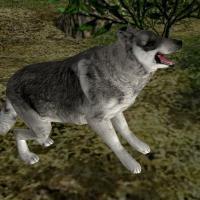



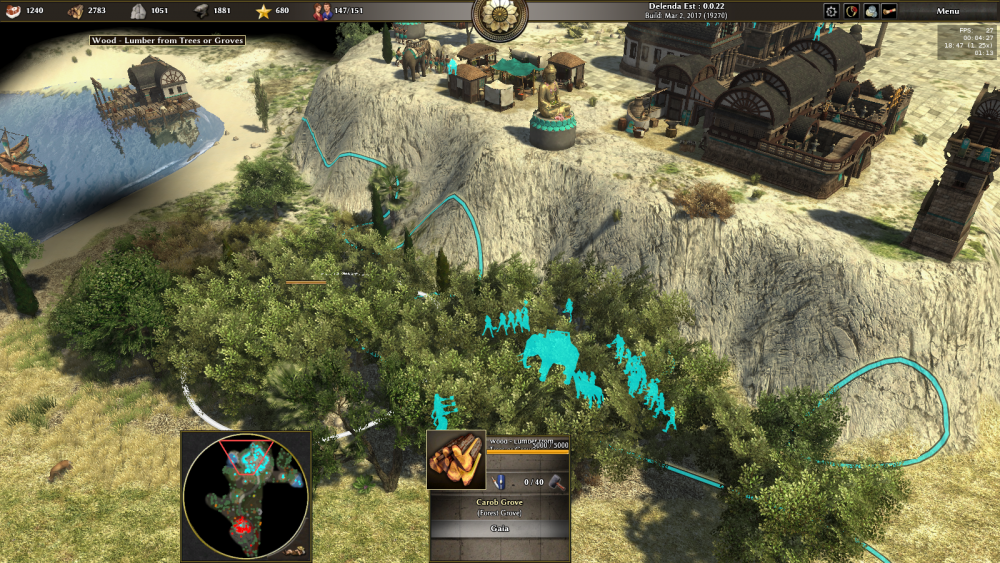
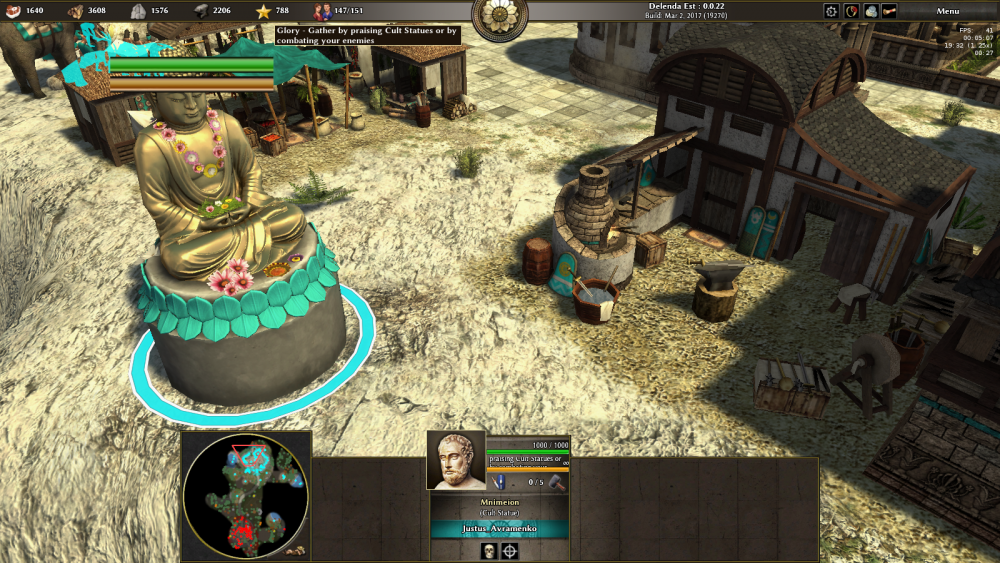

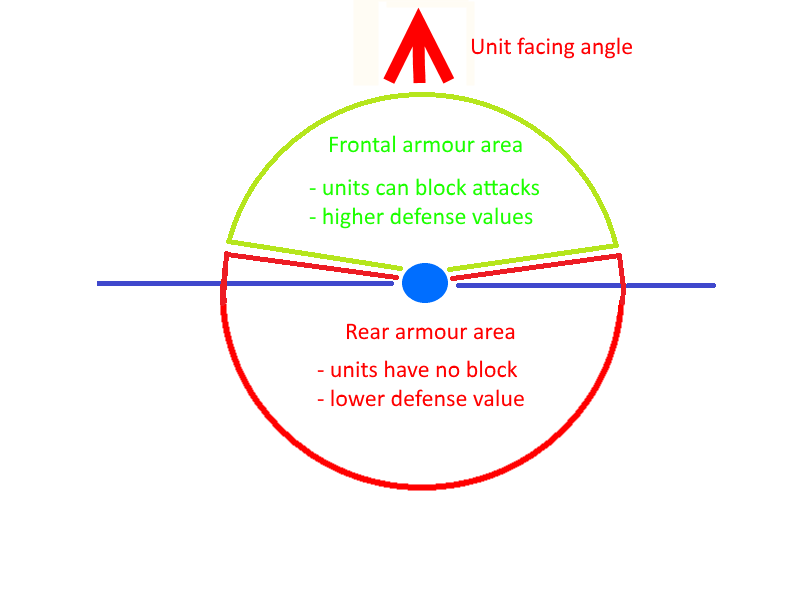
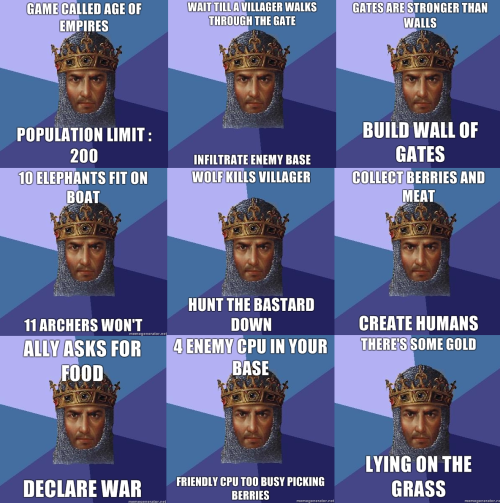
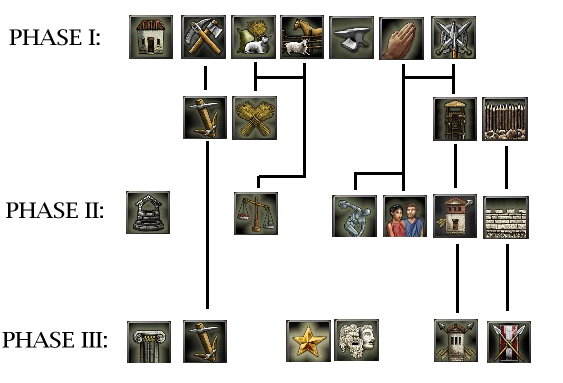
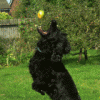
.thumb.png.ce58cea22940c255f5b0a735d5abee36.png)
